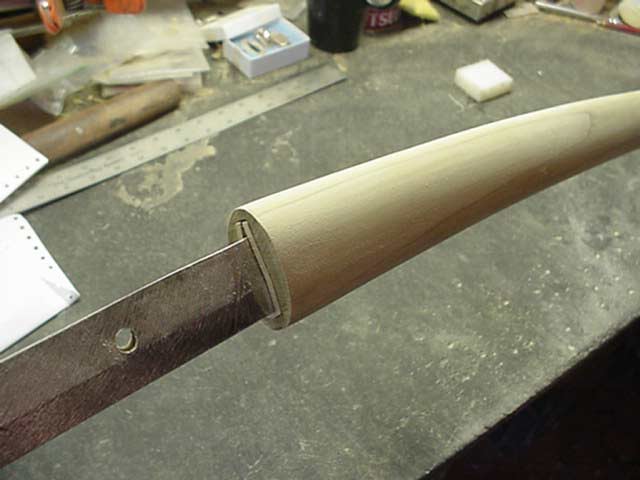- Katana 1€ to 79€
- Katana ONE PIECE
- Katana 80€ to 199€
- Katana 200€ to 599€
- Katana over 600 €
- Katana Custom
- Iaito - 模擬刀
- Wakizashi
- Tanto
- [+] Parts katana
- [+] Katana Accessory
- Engraving katana
- [+] Ninja
- [+] Chinese weapon
- [+] Wooden weapons
- [+] Knife
- [+] Outfits
- [+] House and Objects
- Médiéval Sword
- Military saber
- Home
- Profile
- Services
- Help
- Log in
- **Cart**
- What a difference in a katana and an Iaito
- The different types of steel
- How to choose your katana
- Accessories and maintenance of Iaito and katana
- Little katana dictionary
- What disciplines to practice with a katana or an iaito
- Musashi Miyamoto the greatest samurai Japan has ever known
- The laikidoka sword: the bokken
- Kendo, the legacy of the samurai
- The making of a katana
- The Habaki of the katana
- The Kanjis
- Budo
- The Saya of the katana
- Kyudo
- The Yumi
- The Hamon of the katana
- The Tsuba of the Katana
- How to measure a katana or an iaito
- The Sageo of the katana
- The history of the Japanese sword - 1
- The history of the Japanese sword - 2
- Custom katanas and iaitos
- Chanoyu, the Japanese tea ceremony
- The Iaido
- The boshin war or the last samurai
- The best incense from Japan
- Renovation of Japanese swords
- Ninja
- FAQ
- Terms and conditions
- Site map
- Contact
- Useful links
- Private life
- Clubs & Communities
The Saya of the Katana

The saya is the name of the scabbard used for Japanese sabers, swords and daggers such as katana, wakizashi, ïaito or tantō.
The saya are normally made from light wood and lacquered on the outside.
The best wood for making saya is magnolia because it has the particularity of being hygrometric.
The saya usually has a kurigata, a small ring, to attach the sageo, a braided rope. The end of the saya can be reinforced with a metal tip, the kojiri.
The mouth of the saya is called koiguchi.
The saya are normally made from light wood and lacquered on the outside.
The best wood for making saya is magnolia because it has the particularity of being hygrometric.
The saya usually has a kurigata, a small ring, to attach the sageo, a braided rope. The end of the saya can be reinforced with a metal tip, the kojiri.
The mouth of the saya is called koiguchi.
The making of a saya
The manufacture of the saya (scabbard) results from the superposition of two selected wooden shells (preferably magnolia) previously adjusted very precisely so that the blade does not float in the saya and does not rub in it, rendering the work of the polisher.
The saya is the only protection of the blade, it must be done with great care.
The manufacture of the saya (scabbard) results from the superposition of two selected wooden shells (preferably magnolia) previously adjusted very precisely so that the blade does not float in the saya and does not rub in it, rendering the work of the polisher.
The saya is the only protection of the blade, it must be done with great care.

Cut a wooden board into two parts, trace the profile of the blade, then cut with a wood chisel

The two shells are assembled and glued, then test of the saya on the blade of the katana

The final shape is done with a file.

Making koiguchi (here in black horn)

Adjustment and finishing before sanding and lacquering.
The saya has a particular importance in ïaïdo which focuses on the art of drawing the sword. Beginners in ïaido use boken with plastic saya to get started with the practice.
When the katana is sheathed in the saya (noto), the fingers of the left hand (except the index finger) hide the koiguchi (the opening of the saya) because for the samurai, it was a "feminine principle", the index used to guide the blade.
The noto is one of the most important gestures in the practice of ïaïdo, it is at this moment that we are most vulnerable; this gesture is only done when one is absolutely sure not to risk anything, it is accompanied by a very deep zanshin (state of vigilance) and at any time the sword must be able to spring from the saya.
Sources:
Wikipedia
http://nippon_to.monsite-orange.fr/
When the katana is sheathed in the saya (noto), the fingers of the left hand (except the index finger) hide the koiguchi (the opening of the saya) because for the samurai, it was a "feminine principle", the index used to guide the blade.
The noto is one of the most important gestures in the practice of ïaïdo, it is at this moment that we are most vulnerable; this gesture is only done when one is absolutely sure not to risk anything, it is accompanied by a very deep zanshin (state of vigilance) and at any time the sword must be able to spring from the saya.
Sources:
Wikipedia
http://nippon_to.monsite-orange.fr/
|
No comments
|




